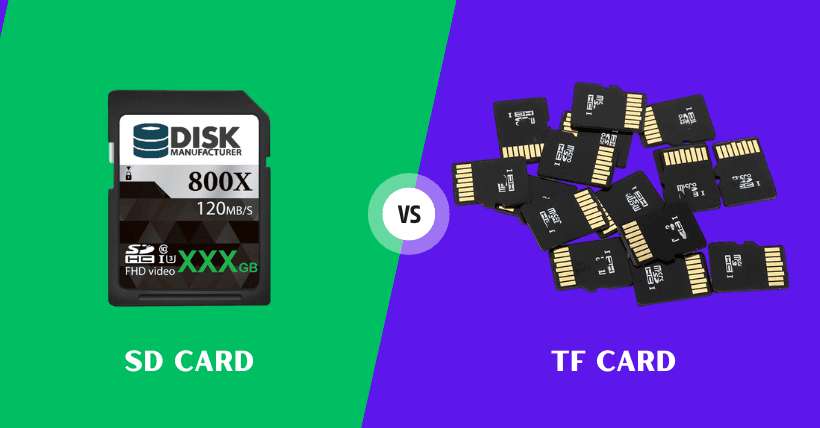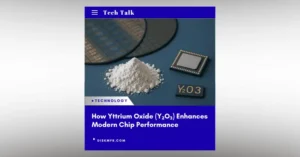Introduction
In the digital age, portable storage solutions have become an essential part of our lives. When it comes to expanding the storage capacity of our devices, two popular options stand out: SD cards and TF cards. Both these cards offer convenient ways to store and transfer data, but they differ in several aspects. This article aims to compare SD cards and TF cards, helping you make an informed decision about which one is right for your needs.
What is an SD Card?
An SD (Secure Digital) card is a type of portable storage device widely used in various electronic devices such as digital cameras, smartphones, tablets, and laptops. SD cards are available in different sizes, including standard SD, miniSD, and microSD. They are known for their compatibility, high storage capacities, and fast data transfer speeds.
What is a TF Card?
TF (TransFlash) cards, also known as microSD cards, are a smaller variant of SD cards. They were initially developed by SanDisk but were later adopted by the SD Association. TF cards are primarily used in smartphones, tablets, action cameras, and other compact devices that require a smaller form factor. Despite the name change, TF cards are functionally equivalent to microSD cards.
SD Card vs. TF Card: Physical Differences
One of the key differences between SD cards and TF cards lies in their physical dimensions. SD cards are larger and typically used in devices that have more space available, such as digital cameras and laptops. On the other hand, TF cards are significantly smaller, making them suitable for devices with limited space, including smartphones and action cameras.
SD Card vs. TF Card: Storage Capacities
Both SD cards and TF cards offer a wide range of storage capacities to meet different user requirements. SD cards typically offer larger storage options, ranging from a few gigabytes to several terabytes. TF cards, although smaller in size, also come in various storage capacities, starting from a few gigabytes and going up to a few terabytes. The choice between SD and TF cards depends on the storage needs of your device and the amount of data you plan to store.
SD Card vs. TF Card: Speed and Performance
When it comes to data transfer speed and performance, both SD cards and TF cards have evolved over time. The performance of these cards is often denoted by their speed class, which indicates the minimum sustained write speeds. SD cards have different speed classes, such as Class 2, Class 4, Class 6, Class 10, and UHS Speed Class. TF cards also have similar speed classes and UHS Speed Class ratings.
Higher speed class ratings indicate faster data transfer rates, allowing for quicker file transfers and smoother media playback. When choosing between an SD card and a TF card, consider the speed requirements of your device and the type of data you’ll be working with. For tasks like high-definition video recording or capturing burst shots on a camera, a higher-speed class card would be beneficial.
Compatibility and Usage
Both SD cards and TF cards are widely compatible with a range of devices, including cameras, smartphones, tablets, gaming consoles, and more. Many devices nowadays have built-in card slots specifically designed for SD cards or TF cards, making it easy to expand storage or transfer files.
It’s important to note that some older devices may only support SD cards and not TF cards due to the difference in size. However, with the use of adapters, TF cards can be easily converted into SD card form factors for compatibility.
SD Card vs. TF Card: Price Comparison
When it comes to pricing, SD cards, and TF cards are relatively similar. The cost varies based on factors such as storage capacity, speed class, and brand. Generally, higher storage capacities and faster speed classes command a higher price tag.
It’s worth noting that counterfeit SD cards and TF cards exist in the market, especially at lower price points. To ensure reliability and performance, it’s recommended to purchase cards from reputable brands and authorized retailers.
SD Card vs. TF Card: Reliability and Durability
Both SD cards and TF cards are designed to be durable and reliable for everyday use. They are resistant to shock, vibration, and temperature variations, ensuring your data remains safe even in demanding environments. However, the reliability and durability can vary depending on the quality of the card and the manufacturer.
To minimize the risk of data loss or card failure, it’s important to handle and store the cards properly. Avoid exposing them to extreme temperatures, moisture, or magnetic fields, and always eject them safely from devices before removing them.
SD Card vs. TF Card: Brand Availability
SD cards and TF cards are available from various reputable brands in the market. Popular brands include SanDisk, Samsung, Kingston, Lexar, and Transcend, among others. These brands offer a wide range of storage capacities, speed classes, and reliable performance.
When choosing a brand, consider factors such as customer reviews, warranty, and after-sales support. Opting for a well-established brand can provide peace of mind and assurance of quality.
Choosing the Right Card for Your Device
To choose the right card for your device, consider the following factors:
- Storage capacity: Determine the amount of storage space you require based on your needs and usage patterns.
- Speed requirements: Assess the speed class and performance specifications based on the tasks you’ll be performing, such as photography, video recording, or gaming.
- Device compatibility: Ensure that your device supports either SD cards or TF cards, depending on your choice.
- Brand reputation: Opt for reputable brands that offer reliable products and good customer support.
- Budget: Consider your budget and find a card that offers the best balance between price and performance.
By considering these factors, you can make an informed decision and choose the right card that meets your specific requirements.
Tips for Proper Handling and Maintenance
To ensure optimal performance and longevity of your SD card or TF card, follow these tips for proper handling and maintenance:
- Insertion and removal: Always power off your device before inserting or removing the card to prevent data corruption or card damage.
- Ejection: Use the proper procedure to eject the card from your device safely. Avoid forcefully removing the card, as it can cause physical damage or data loss.
- Formatting: Regularly format your card using the recommended formatting options on your device. This helps to maintain the card’s performance and removes any fragmented data.
- Storage: Store your card in a protective case or holder when not in use. Keep it in a dry, cool place away from direct sunlight, moisture, or extreme temperatures.
- Backup: Create regular backups of your data stored on the card to prevent loss in case of accidental damage or card failure.
Following these guidelines will help you prolong the lifespan of your card and ensure reliable performance over time.
Conclusion
In the battle of SD card vs. TF card, both options have their strengths and are suitable for different devices and use cases. SD cards offer larger physical sizes, higher storage capacities, and wider compatibility, making them ideal for devices like cameras and laptops. On the other hand, TF cards are smaller, more compact, and often used in smartphones and compact devices.
Consider factors such as storage capacity, speed class, compatibility, and brand reputation when choosing the right card for your device. Proper handling, maintenance, and backups are essential for maximizing the lifespan and performance of your card.
So, whether you opt for an SD card or a TF card, make an informed decision based on your specific needs and enjoy expanded storage and seamless data transfer.
FAQs
FAQ 1: Can an SD card be used in place of a TF card?
Yes, an SD card can be used in place of a TF card by using an adapter that converts the SD card’s larger size to the smaller TF card form factor.
FAQ 2: Are SD cards more reliable than TF cards?
The reliability of both SD cards and TF cards depends on the quality of the card and the manufacturer. It’s important to choose cards from reputable brands known for their reliability and durability.
FAQ 3: What is the maximum storage capacity of an SD card?
SD cards offer a wide range of storage capacities, with the maximum capacity currently available being several terabytes.
FAQ 4: Can SD cards and TF cards be used interchangeably?
Yes, SD cards and TF cards can be used interchangeably with the help of adapters, as long as the device supports the respective card form factors.
FAQ 5: How do I format an SD or TF card?
You can format an SD or TF card using the formatting options available on your device. It’s recommended to use the recommended formatting settings to ensure compatibility and optimal performance.

Recommended Reading:








